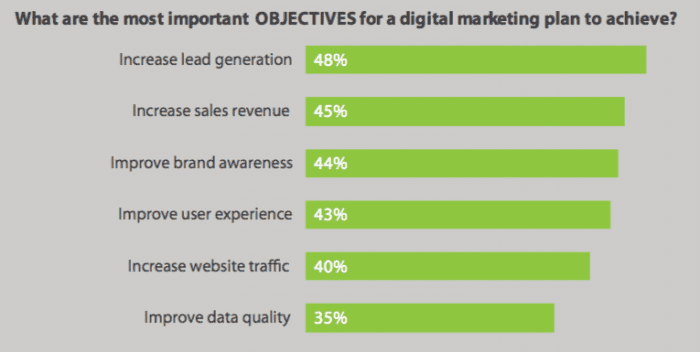Chart of the Day: Which objectives should be in your digital marketing plans?
“Rowing harder doesn’t help if the boat is headed in the wrong direction.”
So said, Kenichi Ohmae, who shared the Japanese approach to business planning with its idea of “long-term planning horizons”. It’s useful to be clear on the difference between vision vs goals vs objectives vs KPIs as the measurement pyramid relating them shows.
With long-term digital marketing initiatives and transformation projects, the same is true, so it’s essential that your digital marketing strategy features clear, SMART marketing objectives so that you have targets you can review performance against. Broader goals and vision can be useful too, to evangelize the benefits of digital marketing to the team.
A recent report from Adestra highlights the importance of choosing the right objectives to include within a digital marketing plan structure.

According to the research, the most important goals relate to lead generation (relevant to companies who don’t sell online who are focused on lead generation) and online sales revenue (for those that do). This makes good sense since these are the main commercial outputs of a digital marketing plan. The other objectives are around critical success factors that support these goals, i.e. increasing traffic and user experience should achieve more outcomes. It makes sense to have specific objectives for these, for example increasing visits defined in a conversion funnel spreadsheet or increasing net promoter score. For Ecommerce businesses, breaking down sales into those from new and existing customers is needed.
In my books, I also recommend putting online channel delivered leads and sales in the context of overall sales, so showing the percentage contribution of digital sales is useful for multichannel businesses.